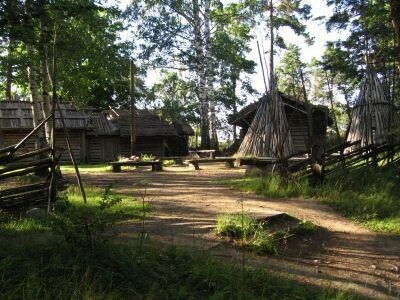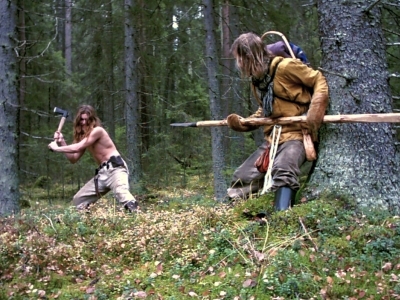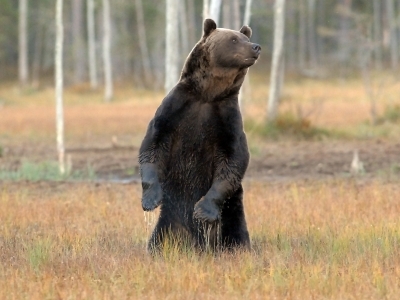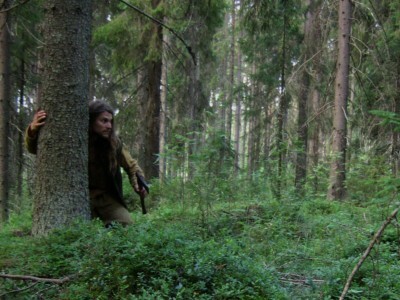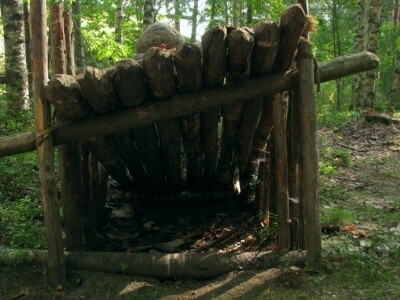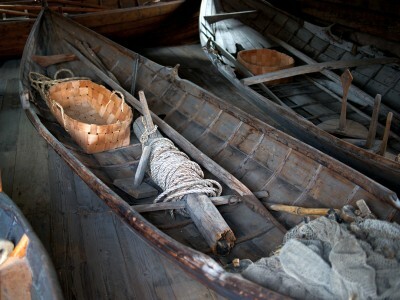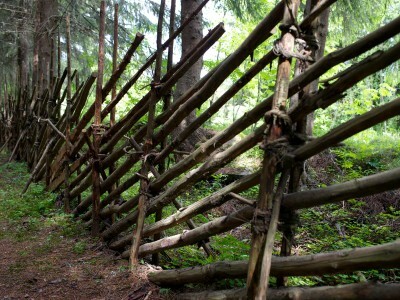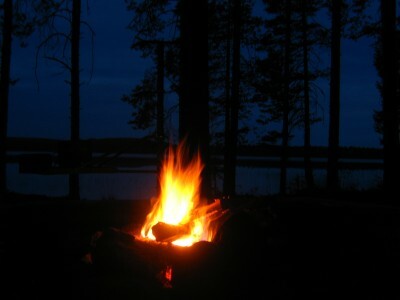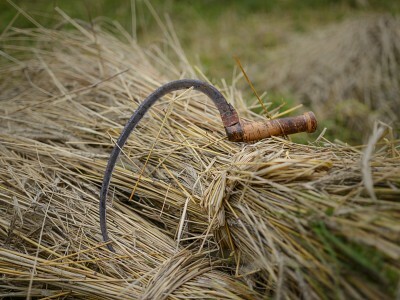Install Steam
login
|
language
简体中文 (Simplified Chinese)
繁體中文 (Traditional Chinese)
日本語 (Japanese)
한국어 (Korean)
ไทย (Thai)
Български (Bulgarian)
Čeština (Czech)
Dansk (Danish)
Deutsch (German)
Español - España (Spanish - Spain)
Español - Latinoamérica (Spanish - Latin America)
Ελληνικά (Greek)
Français (French)
Italiano (Italian)
Bahasa Indonesia (Indonesian)
Magyar (Hungarian)
Nederlands (Dutch)
Norsk (Norwegian)
Polski (Polish)
Português (Portuguese - Portugal)
Português - Brasil (Portuguese - Brazil)
Română (Romanian)
Русский (Russian)
Suomi (Finnish)
Svenska (Swedish)
Türkçe (Turkish)
Tiếng Việt (Vietnamese)
Українська (Ukrainian)
Report a translation problem



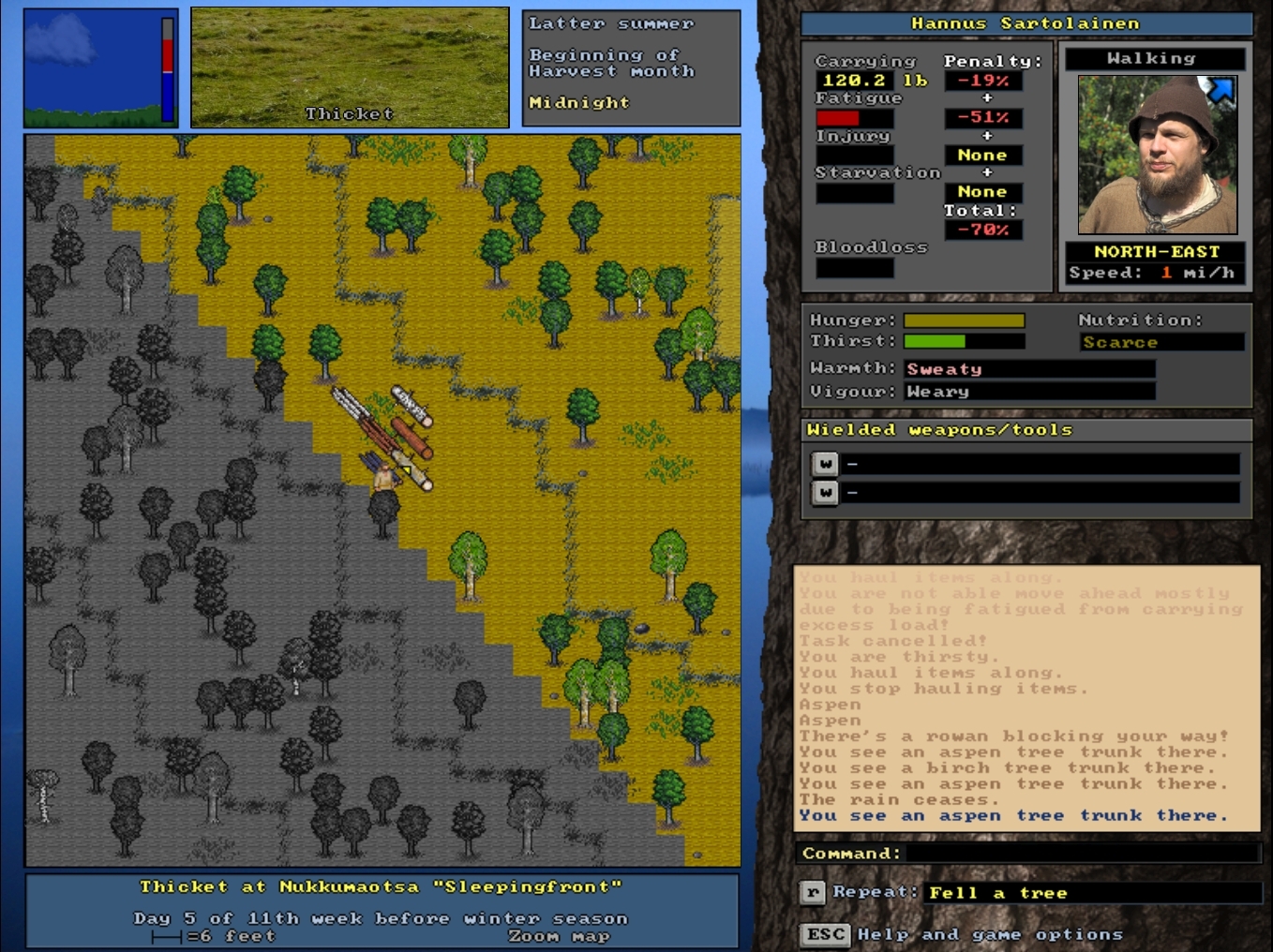 Lots of deciduous trees, including the newly added aspens, can be spotted here. Our character has also felled a good sortiment of different species of slender and big trunks for crafting purposes.
Lots of deciduous trees, including the newly added aspens, can be spotted here. Our character has also felled a good sortiment of different species of slender and big trunks for crafting purposes.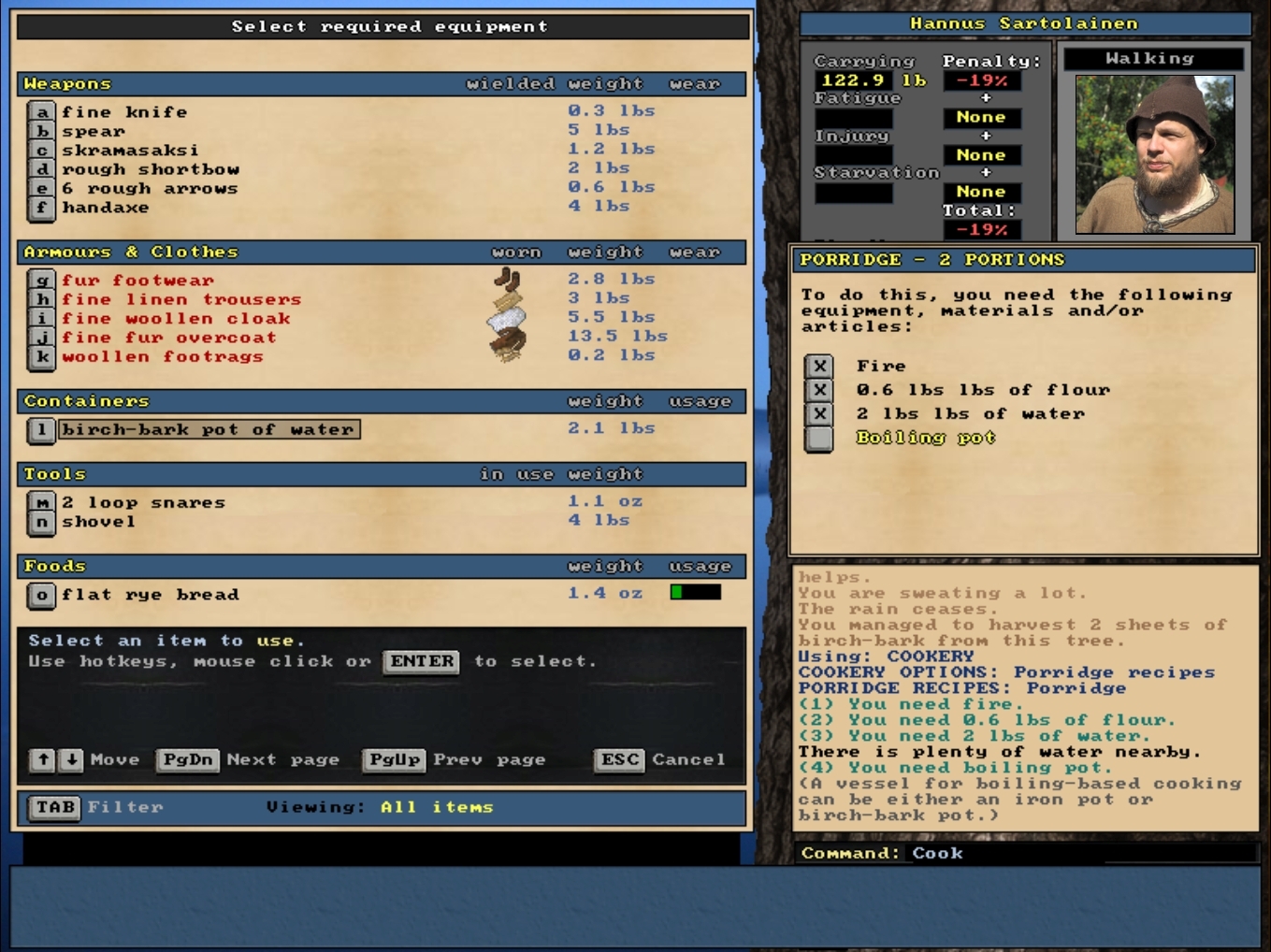 Our character is going to prepare two portions of porridge in his decent birch-bark pot.
Our character is going to prepare two portions of porridge in his decent birch-bark pot.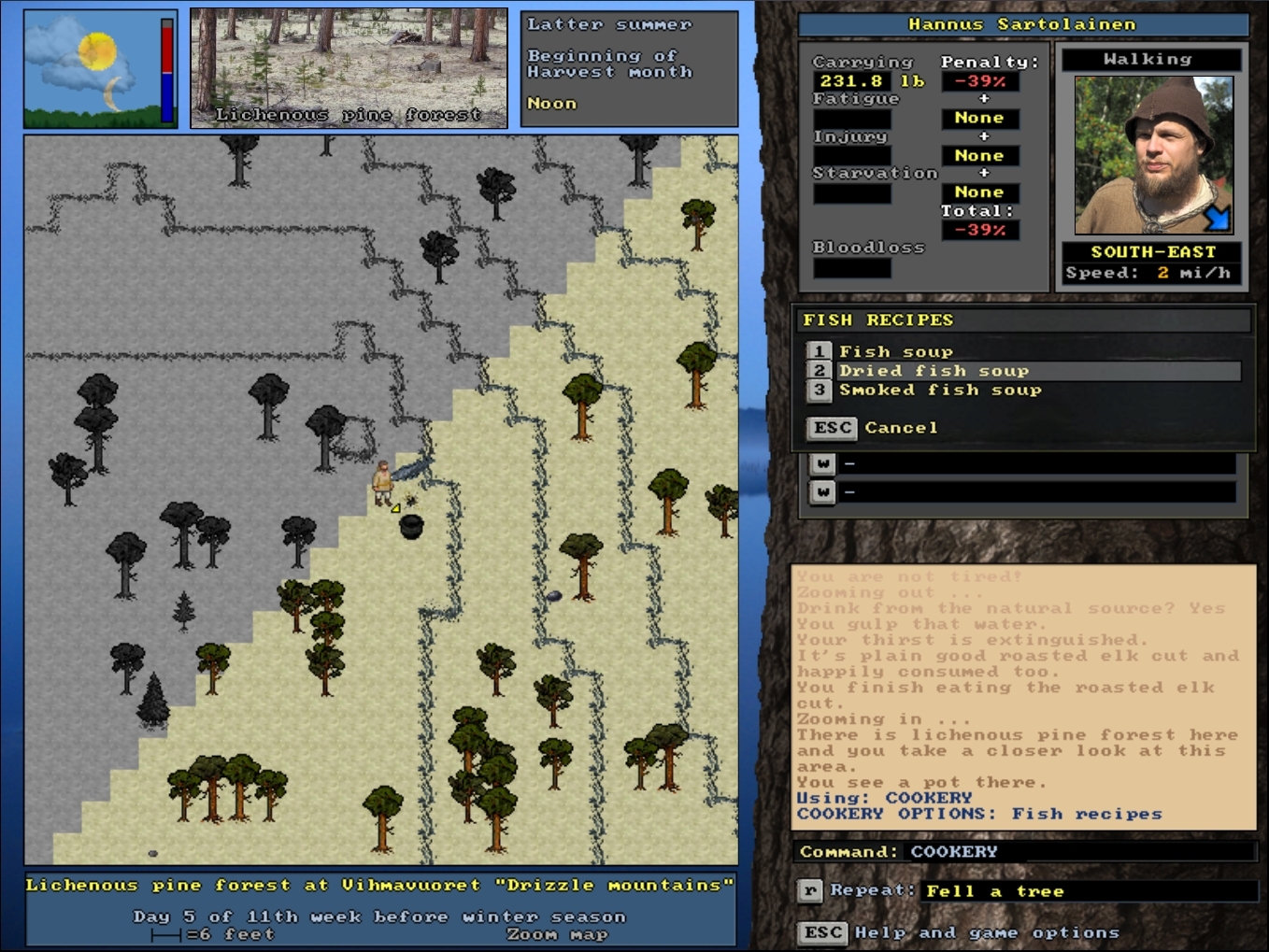 For example the fish soup can be now made of any type of fish - be it raw or preserved.
For example the fish soup can be now made of any type of fish - be it raw or preserved.





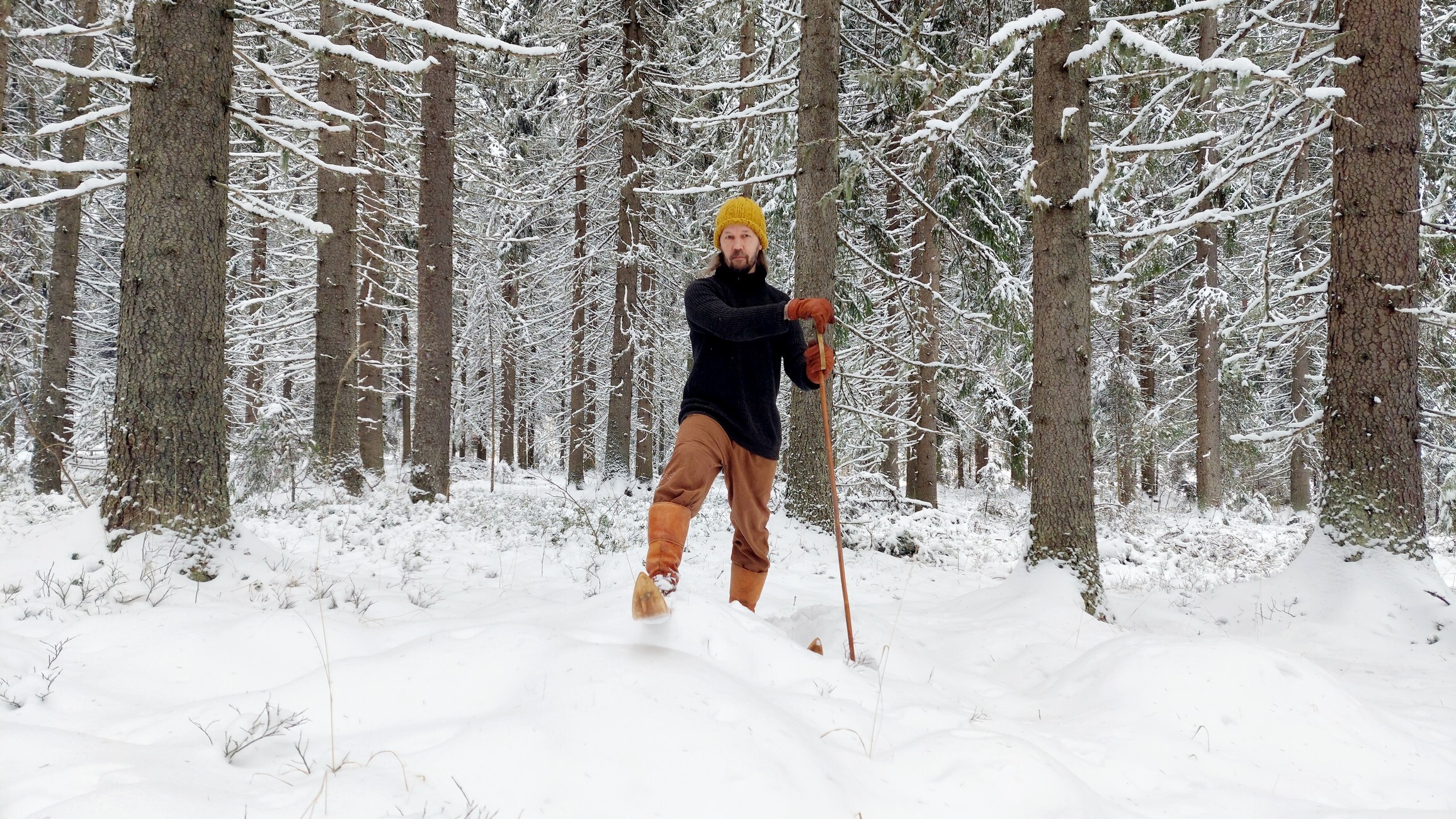 Sami (UnReal World creator) skiing throught the forests far away from development chambers,
Sami (UnReal World creator) skiing throught the forests far away from development chambers,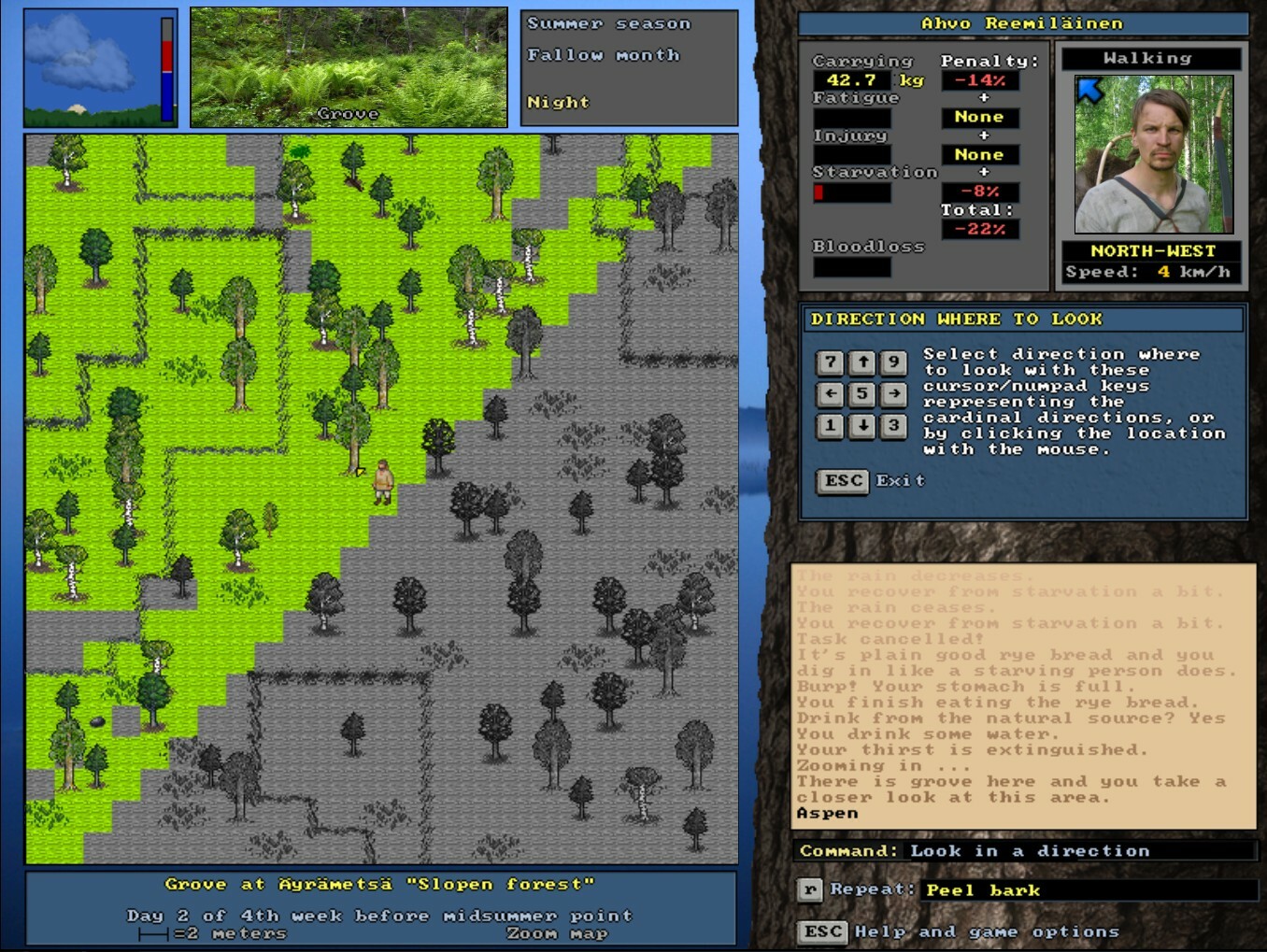 Aspens growing in the grove.
Aspens growing in the grove.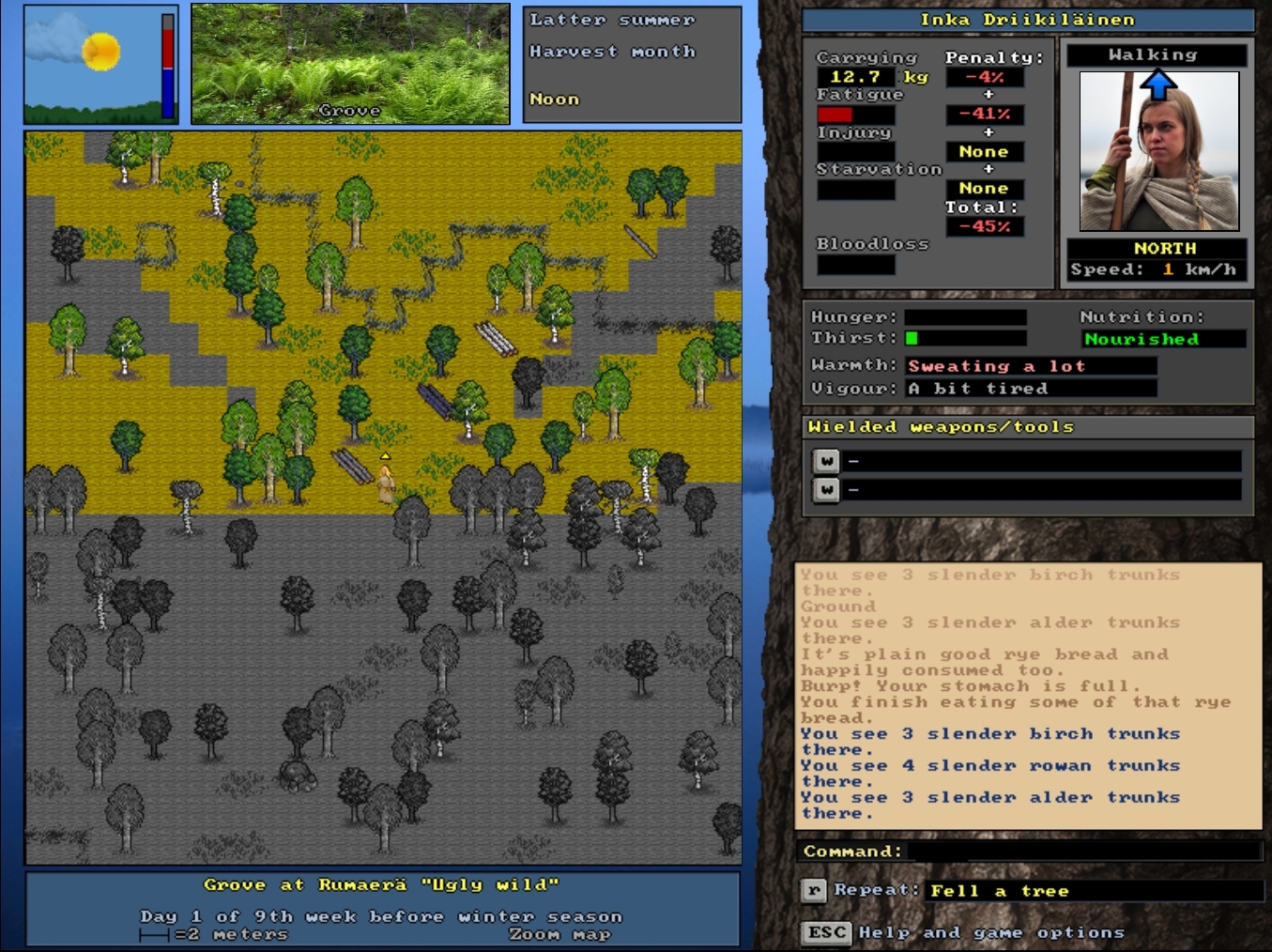 Here you can see small piles of slender alder, rowan and birch trunks placed to the south of the relevant standing young trees.
Here you can see small piles of slender alder, rowan and birch trunks placed to the south of the relevant standing young trees.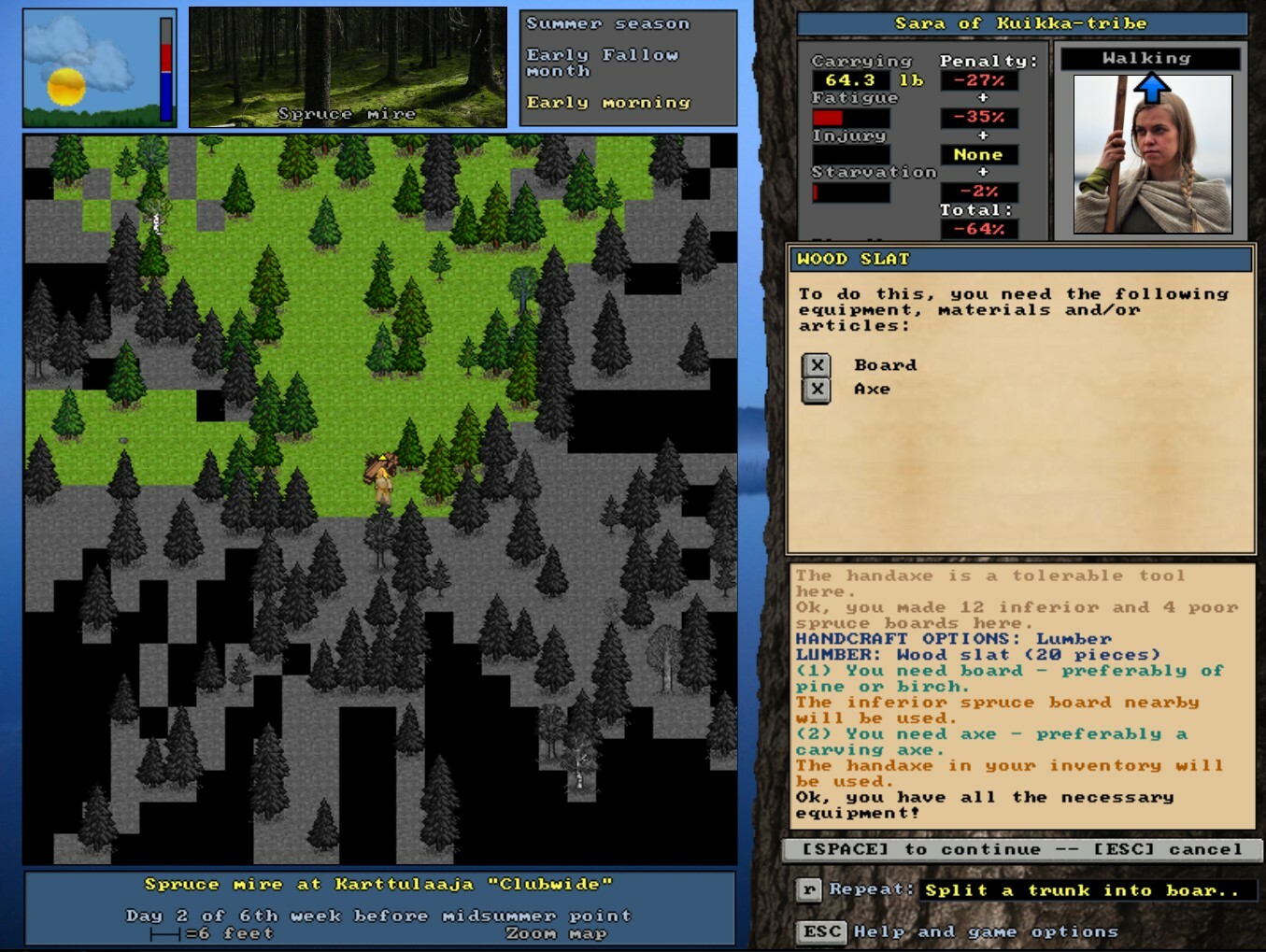 Sara is crafting wood slats, with an intention to make arrow shafts from them - and there are several additions to be seen in the screenshot.
Sara is crafting wood slats, with an intention to make arrow shafts from them - and there are several additions to be seen in the screenshot.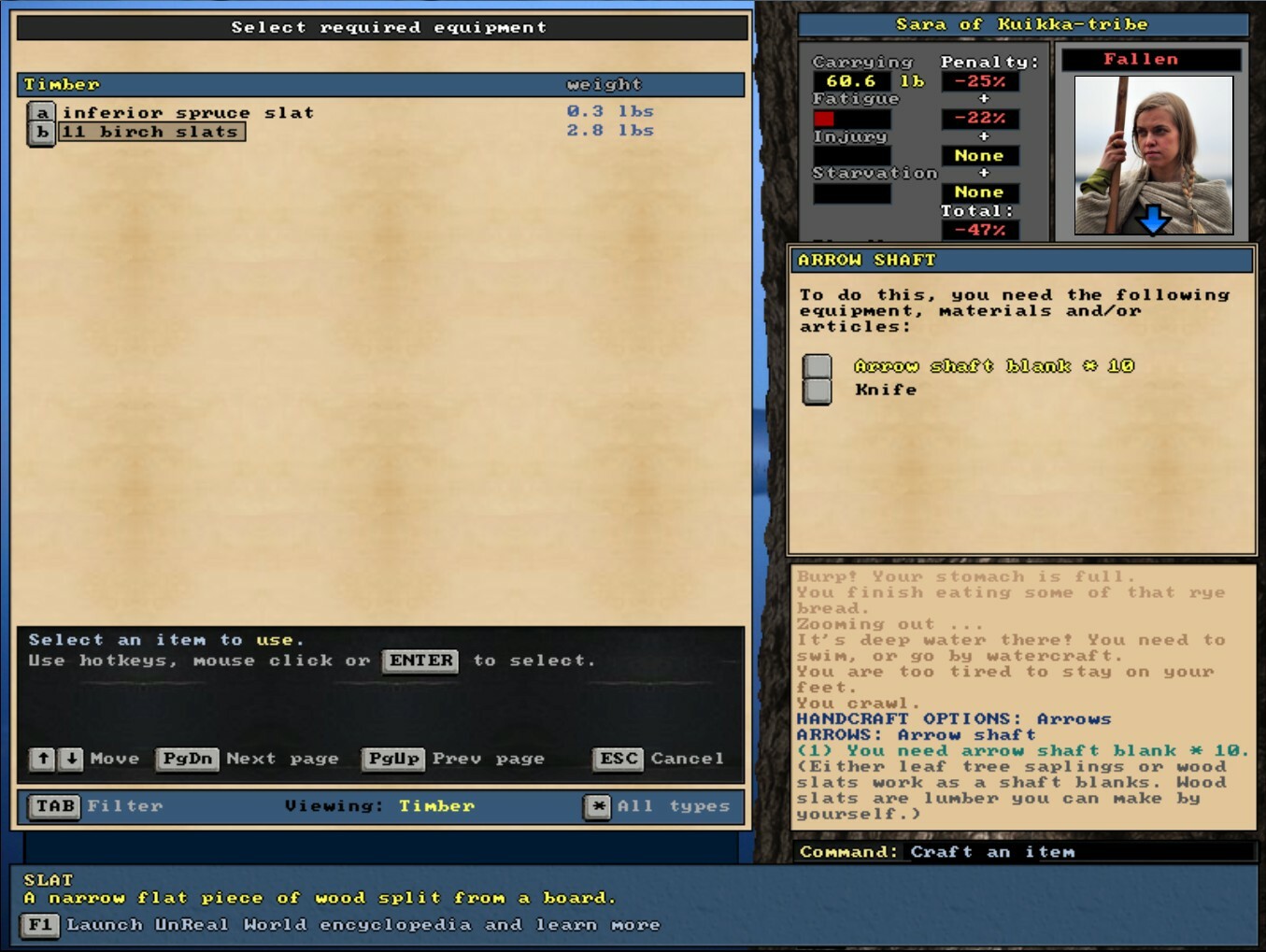 Sara has been making some wood slats from slender spruce and birch trunks and is now crafting arrow shafts.
Sara has been making some wood slats from slender spruce and birch trunks and is now crafting arrow shafts.
 Here our character has felled big spruce, pine and birch trees and they appear on the ground like this.
Here our character has felled big spruce, pine and birch trees and they appear on the ground like this. The tree species preference is indicated within the material and tool selection dialog the same way as all the other preferences. Here's how it goes when longbow crafting is initiated - pine or birch board is the preferred raw material.
The tree species preference is indicated within the material and tool selection dialog the same way as all the other preferences. Here's how it goes when longbow crafting is initiated - pine or birch board is the preferred raw material. There are two shingles being burnt to light up a cottage in this Koivulais settlement. Stack of reserve shingles lays on the floor and a close by player character, their companion or the villagers might automatically set a new shingle burning if need be.
There are two shingles being burnt to light up a cottage in this Koivulais settlement. Stack of reserve shingles lays on the floor and a close by player character, their companion or the villagers might automatically set a new shingle burning if need be.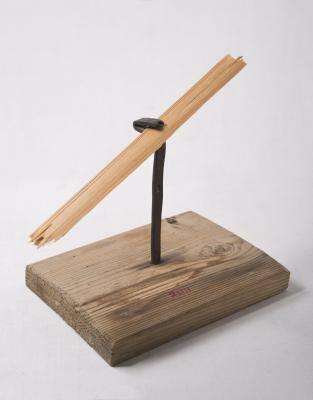
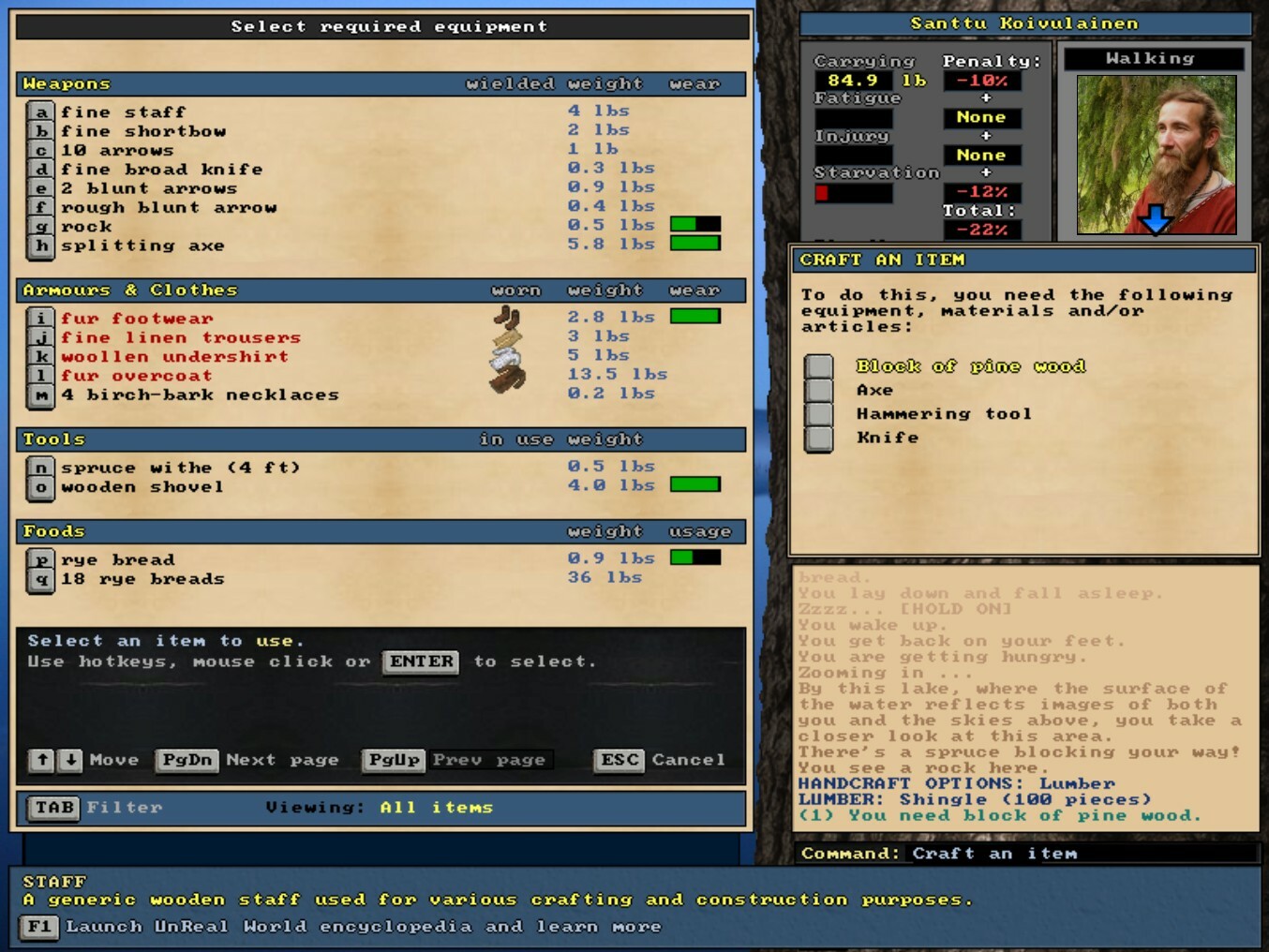 [/imgA block of pine wood is required for splitting the shingles.
[/imgA block of pine wood is required for splitting the shingles.
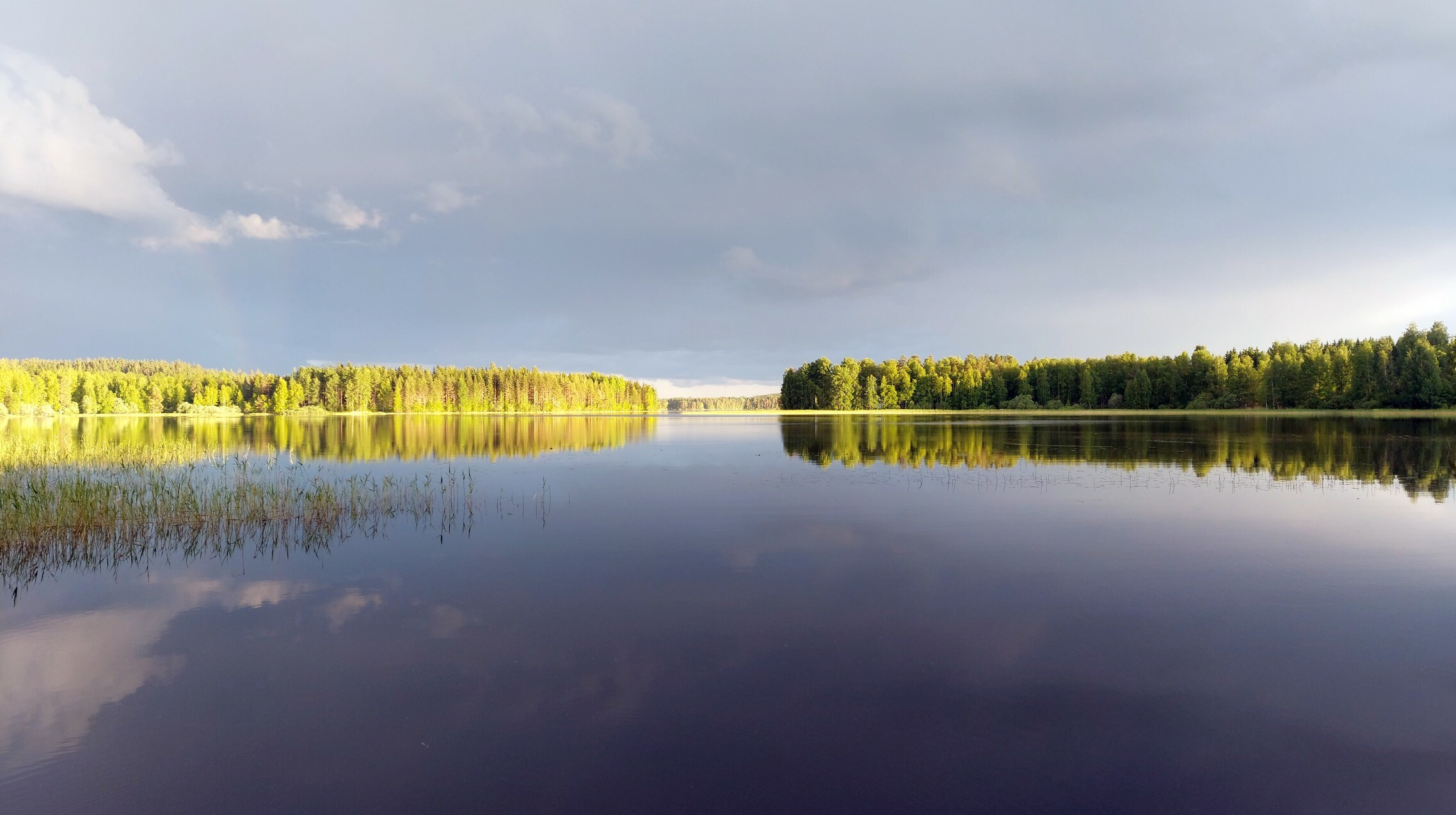
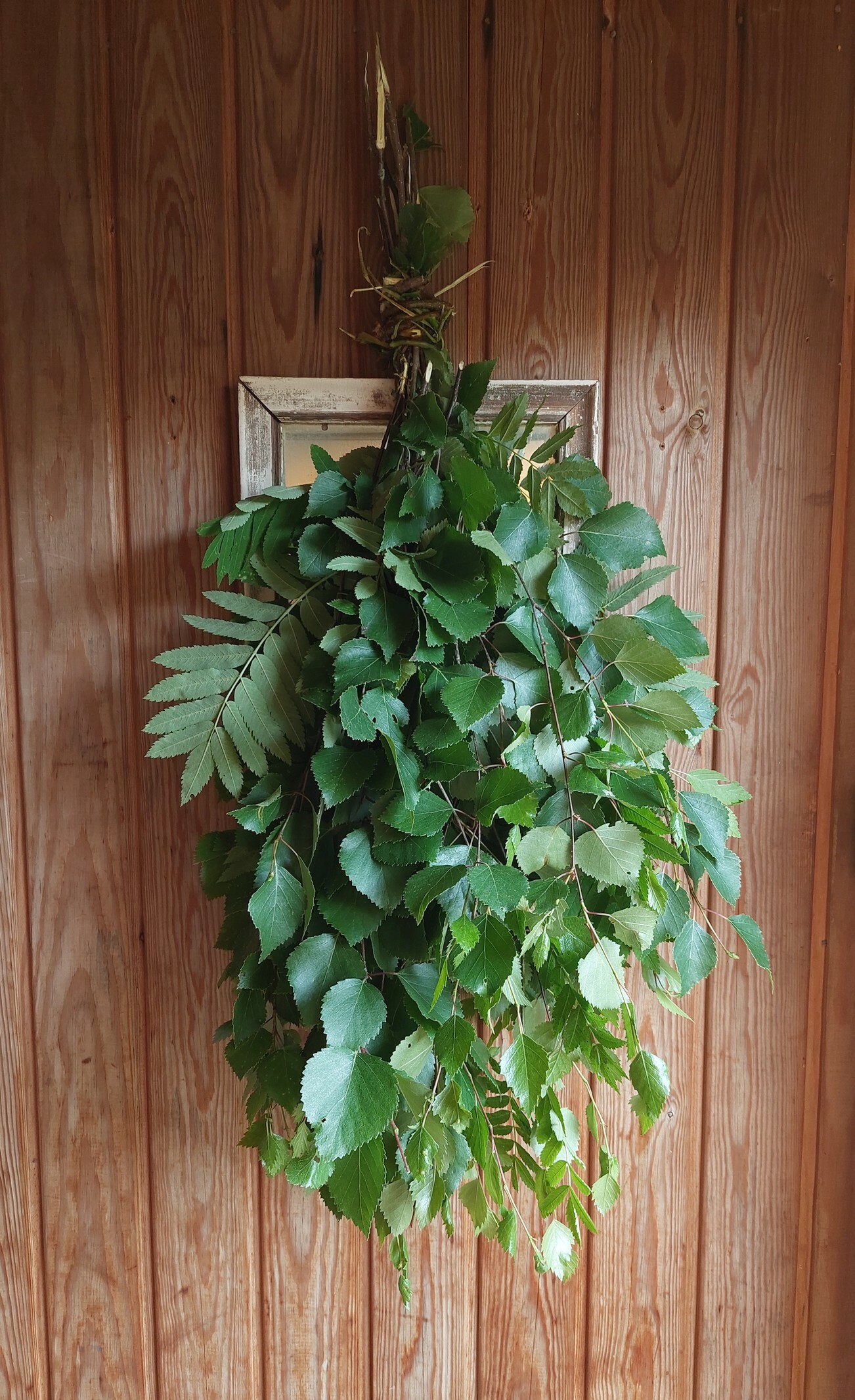
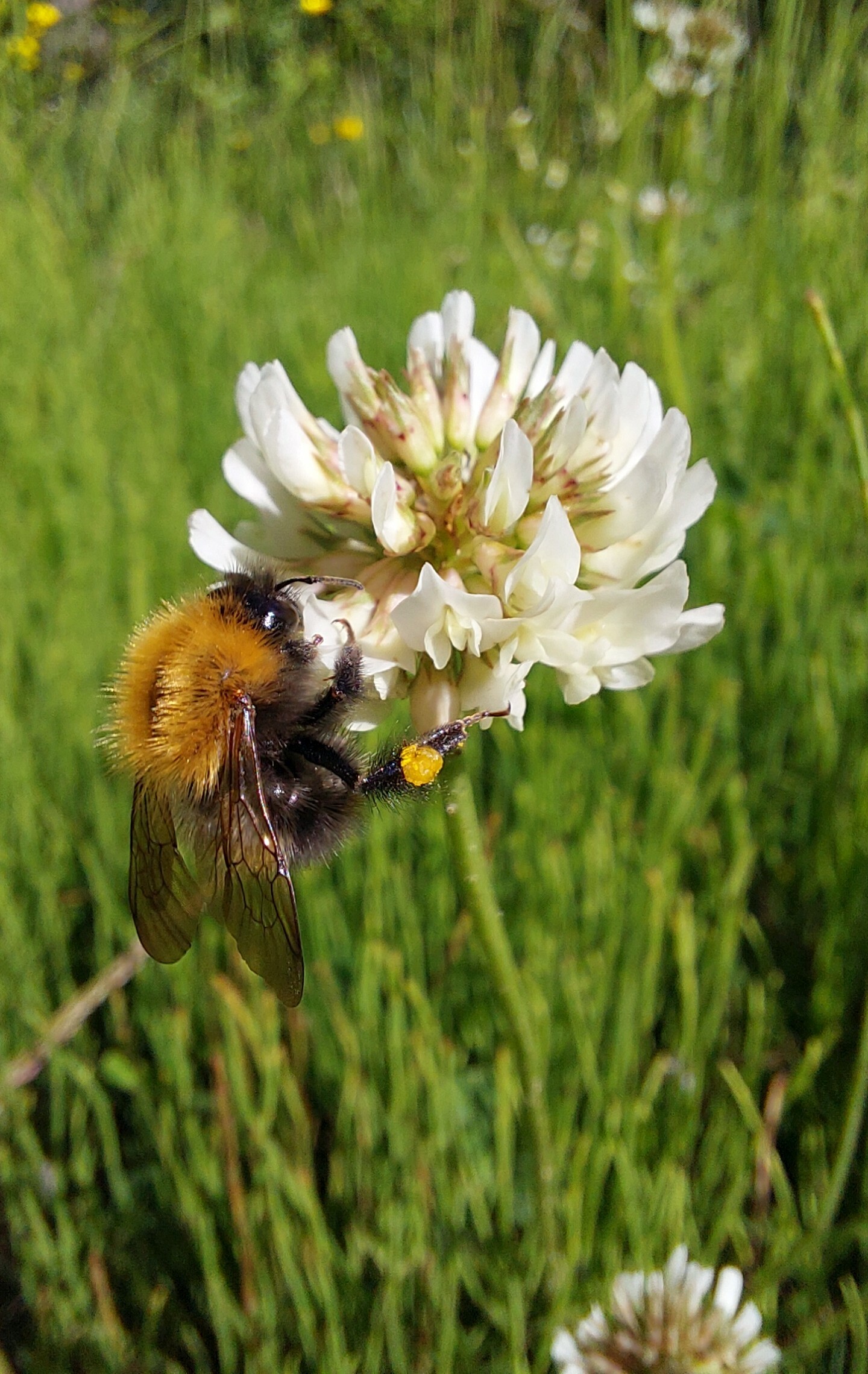


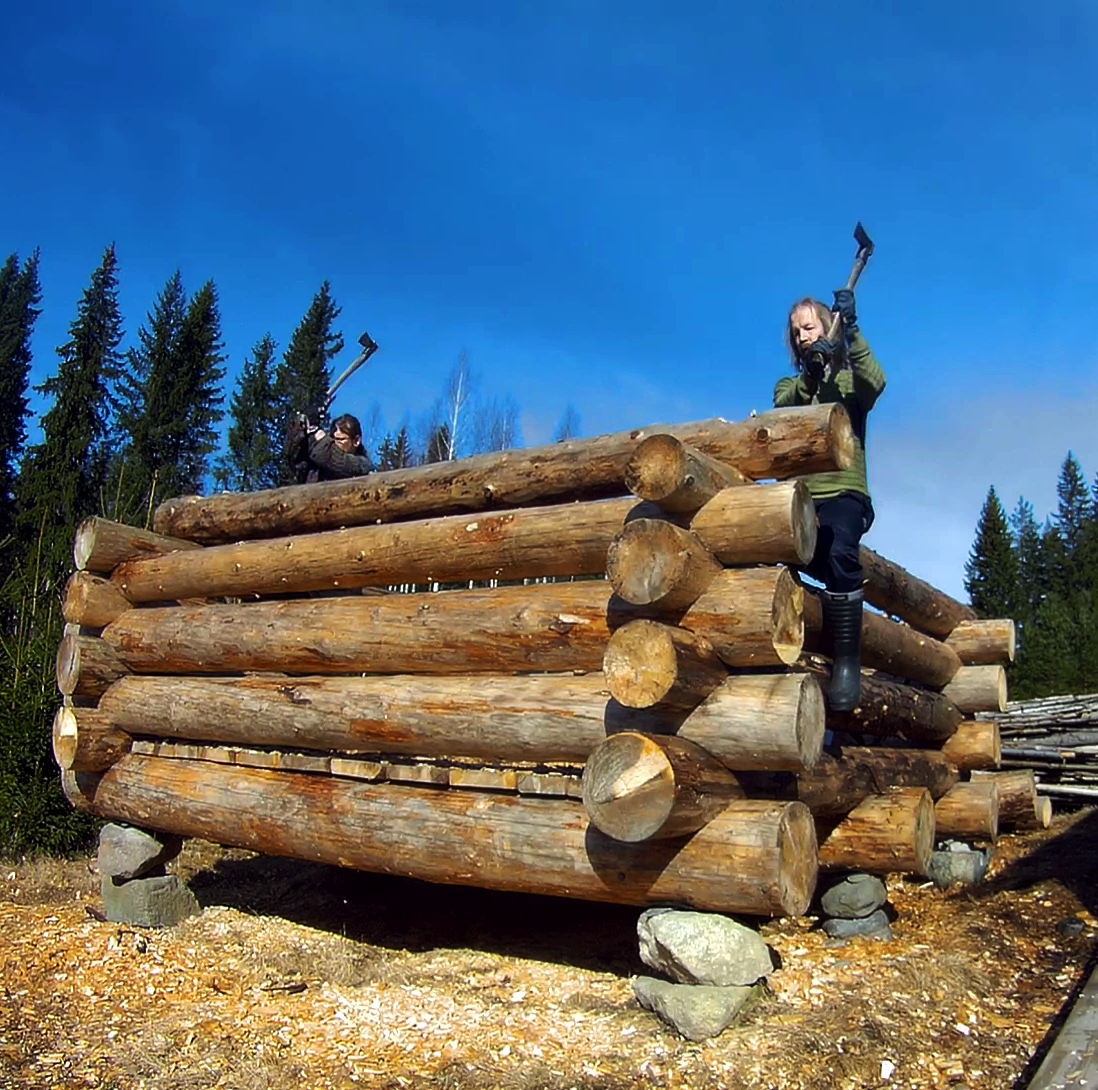 From left to right, Erkka (co-designer) and Sami (creator) of UnReal World building something else than a computer game.
From left to right, Erkka (co-designer) and Sami (creator) of UnReal World building something else than a computer game.